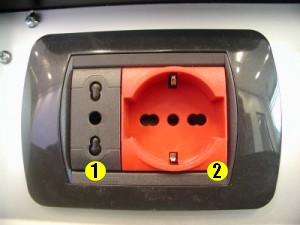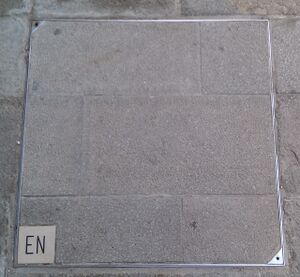Electrical Network

Electricity in Venice, as in all of Italy, comes out of wall sockets at 220 volts and alternating at a rate of 50 cycles per second. This is in comparison to electricity in the United States, which leaves wall sockets at 110 volts and a rate of 60 cycles per second, in addition to having significantly different layouts for wall sockets. This means that American visitors to Venice need to be careful when using wall outlets and often will need adapters or converters.
History
Electrical Grid
Maintenance

As all of Venice's Electrical grid runs under the city in an attempt to avoid unsightly power lines running through the city, the electrical lines are accessible through Pavement stones in the streets. These can be removed, exposing the wires to allow for routine maintenance and repairs.
Future of the Network
Hydrogen Fuel Cell Park
Italian Energy provider, ENEL, has made strides in proposing new type of green energy in an effort to better serve the Venetian populace. A consortium has recently proposed hydrogen fuel cells be used in the area of the Venetian lagoon and that a "hydrogen park" be established on the mainland across from Venice, at the Porto Marghera. The use of hydrogen fuel cells by ENEL to provide local electricity would make Venice the first city to be powered entirely by hydrogen fuel cells and is a suggested solution to the massive power outages that Italy has recently experienced, such as the 2003 Power Outage which effected 55 million people. Hydrogen Fuel Cells would be used to produce electricity, in addition to being used for the heating of homes and powering buses, cars and vaporetti.[1]
Green Energy from Algae
In 2009 proposals were made to establish the Port of Venice as the first self sufficient, algae powered port in the world, with completion of the new power plant expected to be completed in 2012. The 200 million Euro plant will be only the third of it's kind in Europe and is being built in collaboration with renewable energy company, Enalg. Algae collected from Venice's Lagoon is placed in plastic containers where it is mixed with water and carbon dioxide and placed in sunlight, triggering photosynthesis. The resulting biomass is then further treated, producing a fuel used to turn turbines[2].
This experimental plant is intended to initially produce only 500KW of energy, compared to the Port's usage of 7MW. If the project is considered successful, the plant could quickly be scaled up and made capable of producing some 50 MW of electricity, 50% of Venice's total energy needs[3].
Locations
Map of Venice's Electrical Grid
See Also
References
- ↑ "Hydrogen to power Venice's future; Europe". http://go.galegroup.com/ps/i.do?id=GALE%7CA113616802&v=2.1&u=mlin_c_worpoly&it=r&p=AONE&sw=w&asid=ceda148bf0f3a50fa9a90354d2f39bf2.
- ↑ "Venice seaport eyes algae to fuel energy needs". http://www.reuters.com/article/2009/03/24/us-venice-algae-idUSTRE52N59E20090324.
- ↑ "Venice turns green". http://www.economist.com/blogs/babbage/2011/09/algal-energy.